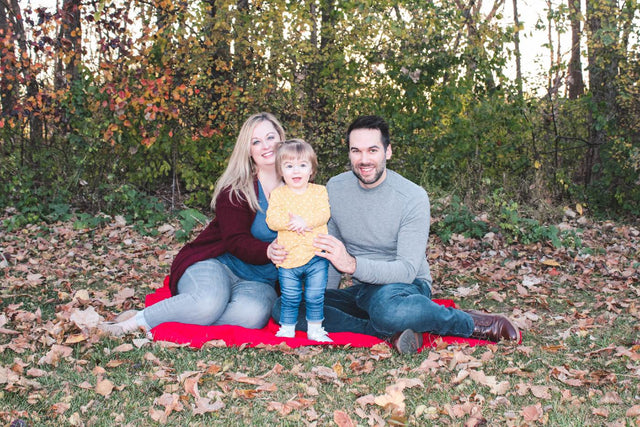SNOO Gave This Mum “So Much Peace of Mind” After a Scary Incident

For as joyful as the newborn days can be, they can also be incredibly stressful—especially when anxiety creeps in...and especially when you have an experience that rattles you early on.
Emily Erbert gave birth to her daughter Claire at 38 weeks. Claire was tiny (just a little over 2.3kg), but had really long limbs that she loved to flail. In fact, she was so good at flinging her little legs, that she actually managed to roll herself onto her side when she was just a few days old while still in the hospital.
“I thought, that can’t be good if she can roll over already,” Emily remembers.
Claire proved to be just as squirmy at home, immediately wriggling her way to the bottom of her first bassinet—a move that unnerved Emily.
“I wasn’t sleeping. She wasn’t sleeping. I was worried she wouldn’t be able to breathe,” Emily says.
Then, came a terrifying turning point. When Claire was 3 weeks old, she started to choke and wasn’t able to breathe.
“We had to call 911. At that moment, I knew we had to get SNOO,” Emily says.
Emily had looked into SNOO while she was still pregnant, but despite being intrigued, wasn’t sure it would be worth the price. But now, all of SNOO’s safety features—including its special swaddle that keeps babies from rolling into risky positions—seemed like a worthwhile investment.
With the memory of their scary choking experience still looming, Emily was initially hesitant to use SNOO overnight. To start, she put Claire in SNOO during the day while she got ready for a doctor’s appointment.
“She fell asleep immediately. I was like what?!” Emily remembers.
Soon, Claire was sleeping six hours straight—this was a huge change. For Claire’s first four weeks of life, she would only sleep when held, so Emily and her husband had to switch off. Nobody in their home was sleeping.
“I asked the doctor if this was okay or if I should be waking her, and the doctor pretended to knock on wood and was like ‘no, no, she’s gaining weight beautifully!’”
But more valuable than the sleep was the sense of security that SNOO brought Emily who was suffering from postpartum anxiety.
“I wouldn’t drive with her because I couldn’t stand thought of me being in the front seat and her being in the back,” Emily remembers. “I can’t even tell you peace of mind SNOO brought me. I wasn’t waking up to make sure she was breathing. I was able to sleep when she was in SNOO.”
Claire has since graduated from SNOO and is a champion cot-snoozer at 20 months.
“She takes a three-hour nap and sleeps 12 to 13 hours at night. I’m able to put her down awake, and I credit it all to SNOO,” she says.
So, for now, Emily’s SNOO is in storage, where it’s out of sight…but certainly not out of mind.
“My SNOO is wrapped up in its dust cover, and whenever I go down the basement, I’m like, hey old friend!”
If you are struggling with postpartum anxiety, please don’t hesitate to reach out to your care provider. While not a substitute for a professional, we’ve rounded up some online mental health resources here.